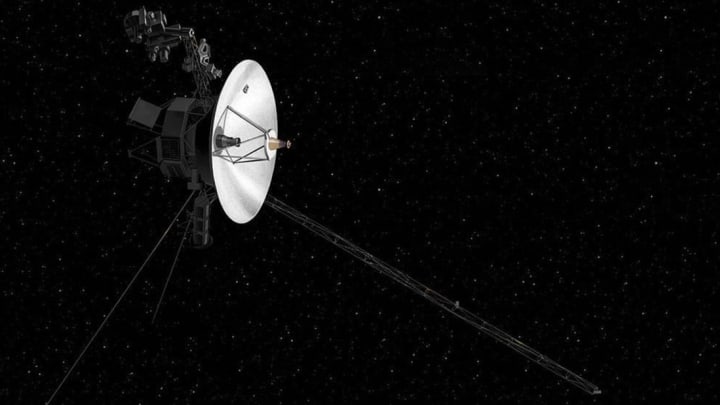In 2012, Voyager 1 became the first human-made object to venture beyond our solar system. The space probe is no longer alone in that distinction. Today—November 4, 2019—researchers at the University of Iowa confirmed that Voyager 2 has entered interstellar space after starting its journey from Earth 42 years ago.
Voyager 2 has made history many times since its 1977 launch. It's been to Saturn and Jupiter, and it remains only spacecraft that has explored Uranus and Neptune. After exhausting the outer reaches of our solar system, Voyager 2's next destination became the mysterious regions of space that lie beyond it.
A new study from the University of Iowa published in the journal Nature Astronomy confirms that Voyager 2 left the realm of our sun on November 5, 2018. The point where our solar system ends and interstellar space begins may seem hard to define, but the Voyager crafts have provided scientists with a clear answer.
Rather than gradually transitioning from one type of space to another, our solar system has a physical boundary. The sun gives off a "solar wind" that's hot and low in plasma. This solar wind creates a bubble, called the heliosphere, that stretches billions of miles from the sun. On the other side of this bubble, space is much cooler and more dense in plasma. There's a clear point where the bubble ends, like what you'd see with a bubble of oil in a glass of water.
About a year ago, a plasma-wave instrument aboard Voyager 2 recorded a dramatic jump in plasma density, indicating that it had crossed over from the heliosphere into interstellar space. It made the transition about 11.1 billion miles from the sun, which is roughly the same distance Voyager 1 clocked when it entered interstellar space from a different point in the solar system.
"It implies that the heliosphere is symmetric, at least at the two points where the Voyager spacecraft crossed," study co-author Bill Kurth said in a news release. "That says that these two points on the surface are almost at the same distance."
Co-author Don Gurnett added, "There's almost a spherical front to this. It's like a blunt bullet."
Now that both Voyagers are in the part of space that lies between the stars, they will orbit the galaxy for 5 billion years or longer. Scientists predict they will outlast Earth.
